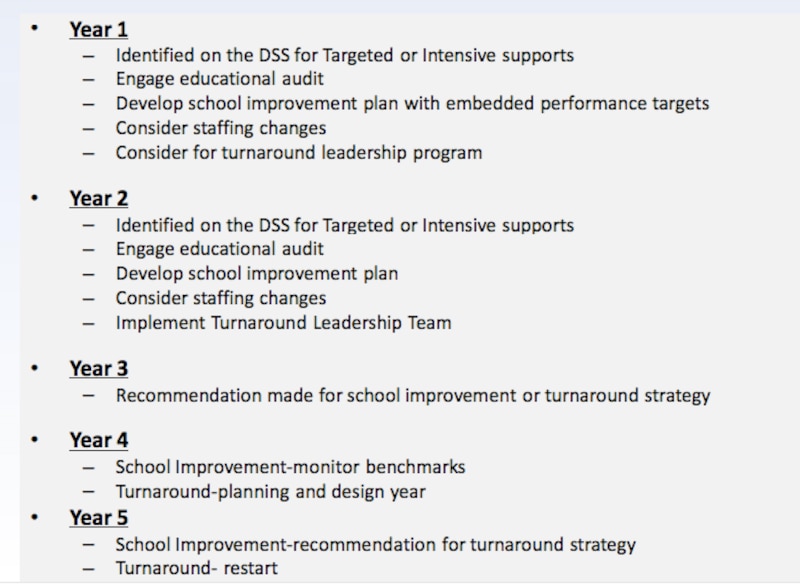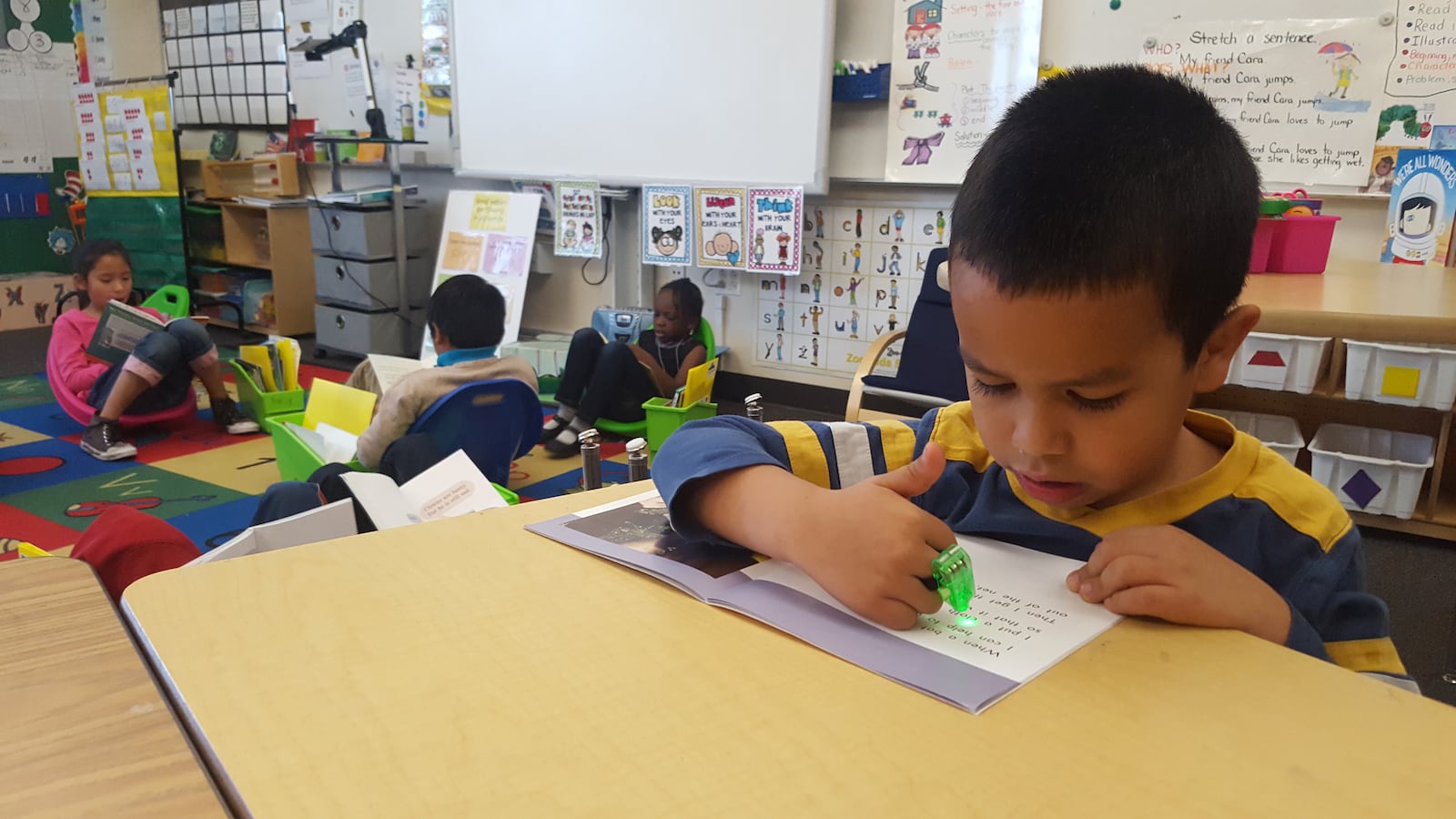When a fifth-grade boy was having trouble waking up in the morning and getting to school on time, officials at his Aurora school, just a block away, came up with an idea.
They gave the student a buddy — another fifth grader who lives two doors down. The boy agreed to knock on his classmate’s door every morning so the two could walk to school together.
“We had to get creative,” said Shannon Blackard, the interim principal of Paris Elementary. “He became more motivated to get to school on time.”
That buddy system is part of a broader push that has led to better attendance at the school — one emphasis to boost student achievement under a district improvement plan already in place. But bigger changes may soon be coming to Paris Elementary.
The 363-student school has logged five straight years of low performance, triggering the next step in Aurora Public Schools’ system for intervening in low-performing schools. District officials this fall put out a “request for information” from interested parties — which could include charter schools and consultants — seeking ideas for more aggressive steps for improvement.
After this week’s deadline to respond passes, the district will review the responses and ask the school board to vote on recommendations as soon as next month. It will be one of the first significant decisions for the seven-member board since four teachers-union backed candidates won election last month. Those new members have questioned some of the district’s reform efforts.
Superintendent Rico Munn created the district’s framework for intervening in low-performing schools after taking over the role in 2013.
Paris Elementary is not the first school to reach five years of low performance, but it stands apart because it is already under a district-approved innovation plan. That plan gave the school more flexibility in budgeting and setting the school calendar, and in making hiring decisions.
Speaking at a September school board meeting about schools facing turnaround, Munn characterized the recommendation for Paris Elementary as “the most high-profile.”
The district essentially is trying to step in before the state forces its hand.
On its fifth year of priority improvement, one of the lowest ratings the state gives, Paris is one year away from being on the list of schools requiring state action if it doesn’t improve. This year, the state did assign more points to the school in the ratings compared to last year, but not enough for the school to jump up into a higher category of ratings.
The school is a block away from the University of Colorado Anschutz Medical Campus and is surrounded by apartments and multi-family housing. Every one of the students who attends the school qualifies for free or reduced-price lunch. Eight of every 10 are learning English as a second language. The students come from 16 different countries.
The school’s principal left the role at the beginning of the school year, leaving a district official to step in for a while before an assistant principal was named interim principal for the year.
School officials at Paris, including Blackard, the interim principal, are optimistic that current work at the school is already helping.
For instance, school-level data shows that the number of students reading at grade level this December has more than doubled school-wide compared to the same time last year. The improvements are at every grade level except kindergarten. And for the students that aren’t on grade level, school teams are now meeting regularly to come up with plans for how to help each one catch up.
Improvements are showing in math classrooms, too. Using a new math curriculum, third grade students in one classroom were excitedly engaged last week in an activity to see if they could guess how much a bag of crackers weighed and if they could use the scale to test it.
Early indications for attendance are also positive. The number of students who are chronically absent has dropped by 50 percent. This year so far, 11 percent of students are labeled chronically absent, down from 22.1 percent last year.
Blackard said she isn’t aware of the district’s plans to recommend possible changes to Paris, but said that she expects the school is on track to make improvements anyway.
“I’m very confident,” Blackard said. “We are very focused.”
When Munn discussed the timeline for district recommendations with the school board in September, he described a balancing act between giving schools time to make improvements while stepping in early enough to roll out changes in time when necessary.
“The question is how do we respond, so that we both don’t over-act but don’t react too late,” Munn said.
The district’s framework for dealing with low-performing schools prompts the district to intervene in schools that earn the lowest quality ratings by the state, increasing the level of intervention by the number of years on the clock. Here’s how it works:

When Paris had reached three years of low performance, part of the district’s plan called for the school to adopt the innovation plan and join a so-called innovation zone in northwest Aurora. Along with providing the flexibility of innovation status, the zone is meant to give its five schools the chance to work together and learn from each other.
If the school doesn’t improve enough by next year, the state’s options could include suggesting school closure or asking a charter school or outside group to take over.
Aurora officials have said they want to be proactive about improving schools before they are directed to make changes by the state.
Last year only Aurora Central High School was on the state’s watchlist facing state sanctions. In that case, using the same framework for responding to low-performing schools, district officials were already rolling out an innovation plan giving the school flexibility for changes before the state stepped in.
State officials and state board members recognized the district’s initiative and gave the district a chance to continue rolling out the plan to see if it would result in improvements.
In another case when the district was following the same playbook, the district in 2015 recommended converting low-performing Fletcher Community School into a charter school. The district tapped the Denver network Rocky Mountain Prep, which had responded to a request for information.
After the decision, Fletcher showed some improvements in test scores. This year, Fletcher’s quality ratings showed enough improvement to get off the state’s radar, even before the charter has fully taken over the school. Some teachers and union officials point to that as evidence that the district might have acted too soon instead of considering other options and allowing those efforts to show improvement.
“It’s not that you can’t ultimately get to that conclusion, the question is how do you examine it publicly,” said Bruce Wilcox, union president. “We’re not part of the conversation right now.”

